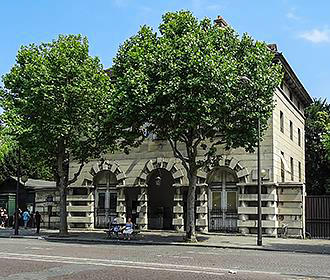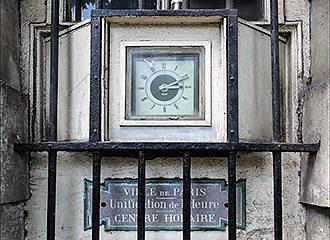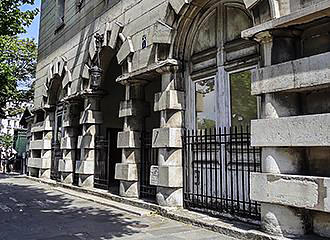The Wall of the Farmers General in Paris
Known as Le Mur des Fermiers Generaux in French, this was a wall constructed in the 1700s with elaborate buildings, which were designed by the architect Claude Nicolas Ledoux under the orders of the Ferme Generale, to ensure taxes were paid on goods entering the city of Paris, yet there are only a few surviving remnants that can be seen today.
About the Wall of the Farmers General
There have been many different walls constructed around Paris going back to the Middle Ages, yet the Mur des Fermiers Generaux was not designed for defending the city, but was intended to be there to stop goods entering the city without the appropriate tax having been paid.
The Ferme Generale was a corporation of tax farmers that collected a toll, sometimes referred to as a grant or a tax, which was put in place on all goods entering Paris that were produced from the water or earth, and this toll was known as the Octroi.
It was the ideas of Charles Alexandre de Calonne, the Controller General of Finances and Antoine Lavoisier, the Farmer General, to construct a wall around Paris with offices and different buildings for the toll collection.
The architect Claude Nicolas Ledoux had already been working for the Ferme Generale within the Franche-Comte region of France, where he had designed a salt store and he was instructed to draw up plans for the head office building in Paris.
So once the idea of the Wall of the Farmers General had been approved by King Louis XVI, with the plans drawn up by Claude Nicolas Ledoux, the construction was started in 1785 to cover an area of approximately 24 kilometres with just over sixty different toll houses or barrier buildings.
Yet the whole concept met with much disapproval from the general public with many Parisians protesting, and so, construction of the wall and the customs offices was swift, and around fifty of these barriers of Le Mur des Fermiers Genereaux were completed by 1788.
But then came the French revolution, and the toll on goods was removed on 1st May 1791, however, this was again put back in place to stop contraband and evasion of tax in 1798, and during the reign of Napoleon Bonaparte the perception of the tax improved, with people starting to accept the concept for the good of all.
The Wall of the Farmers General and the barriers or customs offices were still in operation for a few decades, that is, until the expansion of Paris in the 1860s under the guidance of Baron Haussmann, when the Octroi was abolished.
Because of the restructuring of the city at this time, with numerous new roads, buildings etc, most of the Wall of the Farmers General and the impressive buildings were demolished.
However, there are still some remains that can be seen today and these have all been classed as historical monuments in Paris, which have been fully restored. Probably the most famous one is the Saint Martin Barrier and La Rotonde de la Villette, which is located at the Place de Stalingrad by the Bassin de la Villette in the 19th Arrondissement.
You can also discover two identical buildings called the Barrier d’Enfer, which are pavilions located at the Place Denfert-Rochereau in the 14th Arrondissement and another rotunda called the Barriere Charters, which is located on the edge of Parc Monceau in the 8th Arrondissement.
The other remaining section is referred to as the Barriere du Trone, which has two pavilions, yet because this was classed as the royal entrance to the city, there are two impressive columns, which are called Les Colonnes de la Barriere du Trone. And these can be found in the 12th Arrondissement by the Place de la Nation, which, when you look back at the history of Paris, was originally called the Place du Trone or Throne Square.


